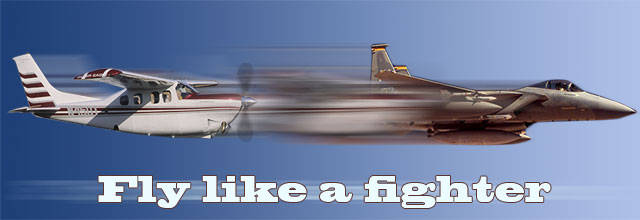
I attended initial F-15 training at Luke Air Force Base in sunny Phoenix. I had only been flying the F-15 a short time, and I was still getting used to all the extra systems and switches in the cockpit compared with the T-38 trainer I had most recently flown. After starting engines for a basic two-ship sortie, I had a problem that required me to shut down and go to the spare aircraft. Once I got engines started in the spare, my inertial navigation system (INS) would not align properly, so I shut down the INS and started it up again. From the radio calls asking about my status, I could tell that my flight lead was getting impatient. After a second time-in for the INS, it showed that I was 40 miles north of where I actually was. There wasn’t a cloud in the sky; I would be spending the whole sortie as the wingman; I had my VFR map with me, and we would be going to one of the local areas I was familiar with. I called ready.

Since I was still getting used to the switches and displays the INS generated, going without them was actually a transition to what I was more used to. I had to revert to the old standby of navigation: I had to look out the window. I was surprised at how liberating that was and equally surprised that after maybe only a dozen sorties in the F-15 I had started to get used to pushing INS buttons and looking at my MFD and the INS display panel to determine my exact position. The INS display may have been able to tell me exact position, but it also lulled me into tunnel vision where I was missing the big picture of geographic orientation during the dogfights and turning maneuvering we were practicing. Without my INS on that sortie, I was nervous enough about becoming geographically disoriented that I did a good job of keeping my internal compass updated throughout the flight. And that taught me a good lesson to keep doing that on subsequent flights when my INS was working.
I now fly with GPS moving map displays, which do an awesome job of helping me maintain positional awareness. I believe they also greatly increase the safety factor in flying. Without a GPS, I remember the amount of cockpit time it took to map read and find landmarks on the ground to navigate through and around airspace, and especially to locate an unfamiliar airport. That time is now spent scanning the skies for other traffic and getting more of a big picture view of the surroundings.
However, glowing screens like televisions, computers, iPads—and cockpit GPS displays—have a magnetic effect on our eyes and tend to lock our focus on them to the exclusion of everything else. These glowing screens take up even more time when the operator isn’t familiar with all the buttons and menus and can’t get into, or out of, the desired display. So do yourself a favor and learn your buttonology on the ground. Even with my very helpful glowing GPS display, I still use my VFR maps and update my position the old-fashioned way. I look out the window.
Larry Brown of Colorado Springs, Colo., is a retired Air Force F-15 pilot who is using the lessons he learned as a fighter pilot as a GA pilot in his Cessna P210. Brown, who has 2,600 hours total time during his 32 years of flying, also was an instructor pilot and flight examiner in the Air Force T-38 and instructor pilot in the T-52, the military’s version of GA’s Diamond DA40. See previous installments of “Fly like a fighter.”



